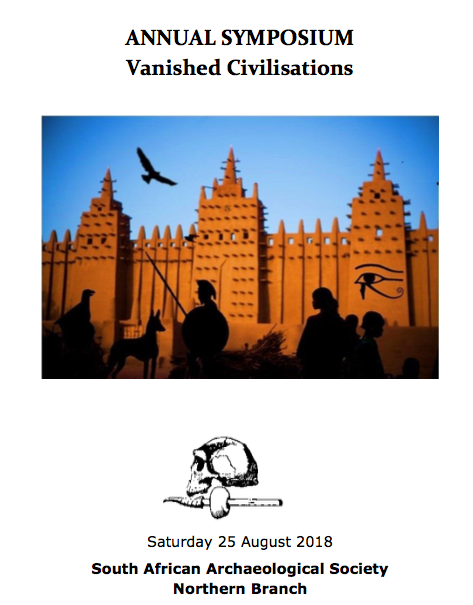The Northern Branch’s Annual Symposium is designed to bring academics and society members together once a year for a day of fascinating lectures.
When we think of former civilisations, we often focus on how great they were, what they achieved, what they often destroyed in their rise to power, and when or why they declined. The focus of this year’s symposium is themes within former civilisations that have vanished. For example, Great Zimbabwe had a far greater population than previously thought and recent investigations into the residential areas surrounding Great Zimbabwe have revealed advanced drainage and spatial utilisations.
We look at the very rise of early civilisations in the Middle-East, and ask why people settled in villages and towns. Symbolism is explored in the art of Ancient Greece and the iconography of ancient Egypt. We also investigate why dogs were buried in a cemetery in Ashkelon during the Persian era? Was it part of a cult? Timbuktu rose as a centre of scholarship during the period of the 15th-16th century Songhai state. It has suffered many setbacks since, including recent attacks by Islamist rebels.
- Date: 25 August 2018 09:00 – 16:00
- Cost : R230 (members); R300 (non-members)
- Venue: Delta Environment Centre, Delta Park, Road No. 3, Victory Park, Johannesburg.
- Parking: Secure parking at the Centre.
- Fees: Please note that the student fee is only applicable to full-time students.
- Catering: Bring your own picnic lunch to enjoy at the tables or on the lawns. The price of a glass of wine or fruit juice is included in the registration fee. Tea, coffee and biscuits will be served mid-morning and after the last lecture.
- Book table: A wide selection of new and second-hand books will be available for purchasing before the symposium starts, at the morning tea break, the lunch period and at the end of the symposium during the afternoon tea break.
- Hosted by: South African Archaeological Society Northern Branch
Email anner@mweb.co.za for more information. Download the programme and booking form below.
Disclaimer: Any views expressed by individuals and organisations are their own and do not in any way represent the views of The Heritage Portal.

